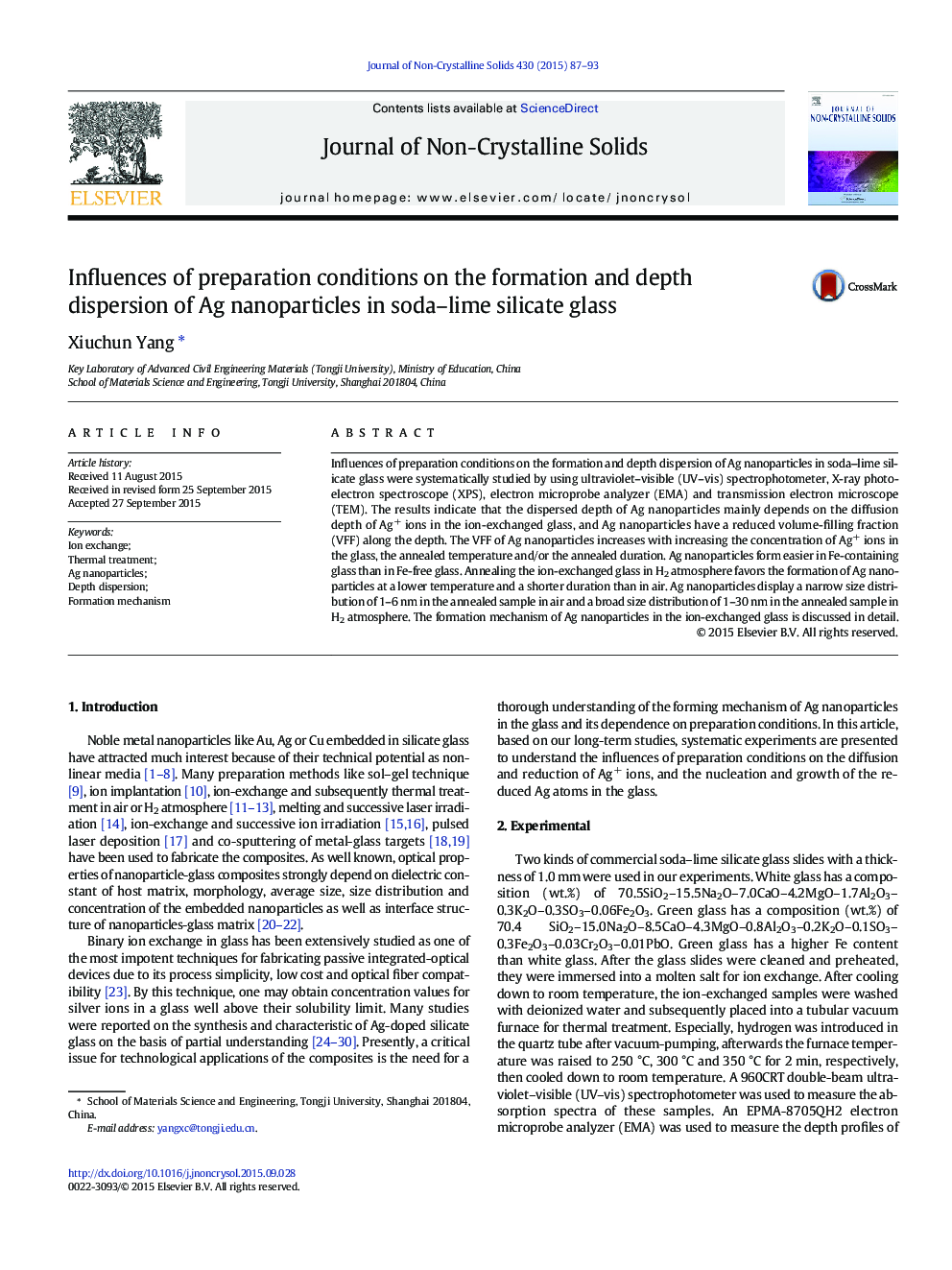| Article ID | Journal | Published Year | Pages | File Type |
|---|---|---|---|---|
| 1480472 | Journal of Non-Crystalline Solids | 2015 | 7 Pages |
Abstract
Influences of preparation conditions on the formation and depth dispersion of Ag nanoparticles in soda-lime silicate glass were systematically studied by using ultraviolet-visible (UV-vis) spectrophotometer, X-ray photoelectron spectroscope (XPS), electron microprobe analyzer (EMA) and transmission electron microscope (TEM). The results indicate that the dispersed depth of Ag nanoparticles mainly depends on the diffusion depth of Ag+ ions in the ion-exchanged glass, and Ag nanoparticles have a reduced volume-filling fraction (VFF) along the depth. The VFF of Ag nanoparticles increases with increasing the concentration of Ag+ ions in the glass, the annealed temperature and/or the annealed duration. Ag nanoparticles form easier in Fe-containing glass than in Fe-free glass. Annealing the ion-exchanged glass in H2 atmosphere favors the formation of Ag nanoparticles at a lower temperature and a shorter duration than in air. Ag nanoparticles display a narrow size distribution of 1-6Â nm in the annealed sample in air and a broad size distribution of 1-30Â nm in the annealed sample in H2 atmosphere. The formation mechanism of Ag nanoparticles in the ion-exchanged glass is discussed in detail.
Related Topics
Physical Sciences and Engineering
Materials Science
Ceramics and Composites
Authors
Xiuchun Yang,
